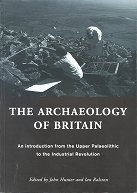
Inside this definitive guide to Iron Age hill-forts, Ian Ralston looks at construction and reconstruction methods and at the architecture of banks, walls, ramparts and ditches, gateways and ancillary features. He examines the placement of these fortifications in the landscape and the evidence demonstrating their effectiveness as defences in times of conflict. In addition, the more recent theories which consider the symbolic aspect of these enclosures are discussed. The work is completed with a selective gazetteer providing details on 20 of the most spectacular Iron Age fortified sites that are worth a visit. The combination of an intriguing archaeological narrative with up-to-date academic research makes this book suitable for both enthusiasts and students alike.
The papers arise from one of a series of conferences held by the Society to review the place of Scotland in European archaeology.
What was life like in Scotland between 4000 and 2000 BC? Where were people living? How did they treat their dead? Why did they spend so much time building extravagant ritual monuments? What was special about the relationship people had with trees and why was so much time and effort spent digging holes and filling them back in again?
This collection examines what we can say about how people lived in the Neolithic and early Bronze Age of mainland Scotland where much of the evidence we have lies in the plough-zone, or survives as slumped banks and filled ditches, or simply appears as ruinous megaliths. It draws together leading experts and young researchers to present fresh findings, and outlines radical new interpretations of the pits, postholes, ditches, rubbish dumps, human remains and broken potsherds left behind by our Neolithic forebears.
Much of this evidence has come to light as a result of rescue or developer-led fieldwork in the past few decades, putting the emphasis very much on lowland, mainland Scotland as opposed to high-profile Orcadian Neolithic sites. Inspired by the work of Gordon Barclay, one of the leading scholars of Scotland’s Neolithic over the last forty years, this new compilation offers a wide-ranging analysis of the evidence we have for the first farmers in Scotland.